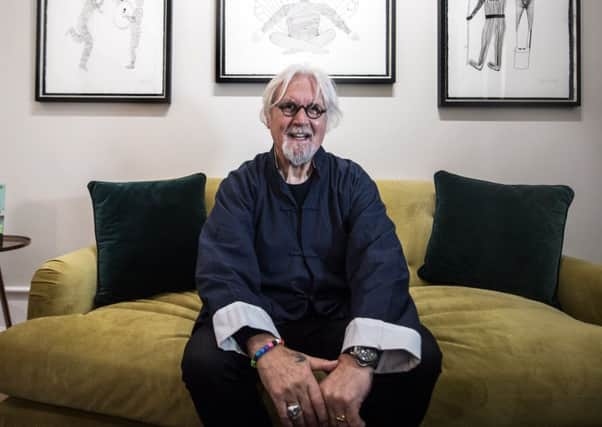Book review: Tall Tales and Wee Stories, by Billy Connolly


Take Connolly’s “The Last Supper” routine: a 20-minute yarn from 1972 based on imagining that Jesus had been born in Gallowgate and that the disciples had gathered in the Sarry Heid. As Connolly wrote in his 2018 book Made in Scotland, this was the act which “came to define me,” arousing the wrath of Christian evangelicals, making headline news and, when recorded at the Tudor Hotel in Airdrie, becoming a cult hit.
On the page here – where, like all the rest of his offerings, it appears without either dates or context – it’s instantly forgettable, puerile even. What brings it to life is everything that doesn’t show up in print, not least the physical verve of Connolly’s portrayal of Glasgow drunkenness. Add that to the mastery of the story-teller’s art, all the timing and craft that he’d already acquired both in the intervals between the Humblebums’ folk songs and as a patter merchant in his shipyard days as an apprentice welder. Add too everything that his psychologist wife Pamela Stephenson revealed in her two books about the demons that drove him onto the stage in the first place, and the message is clear: Connolly’s comedy is all about performance, not the printed word.
Advertisement
Hide AdOn stage, before Parkinson’s tightened its hold, he could prowl, growl, sing, scream, grin and swear in a way denied him on the page. Depending on the audience reaction he could improvise and embellish his stories or change tracks altogether. This was his particular skill and, as he writes in the introduction, he revelled in it, deliberately getting lost in his stories in the same way that he liked to do when in a strange city (“it’s how I discover things, how I learn things, how I imagine things. It keeps things fresh”). Yet on the page, he admits, his stories appear “lumpy and strange ... a merry-go-round of memories, observations, fantasies and ad libs” without any obvious structure. Inevitably, they are also no longer as fresh, funny or freewheeling: ad libs, after all, stop being ad libs when they appear as ink on a page.
Much of Connolly’s comedy is fairly scabrous, and vomiting, flatulence, sex and every stage of drunkenness imaginable all feature heavily. Even so, it was always original: he was probably the first to publicly point out what he did about regurgitated diced carrots, or to wonder what would happen if pubic hair didn’t know when to stop growing. But looking beyond that, who else beat him tearing into the faux-Scottishness of “singing shortbread tins”? And how could anyone match the way he raised swearing to an art form, as in my favourite shaggy dog story here (I’d need too many asterisks to quote it in full) about the Cardinal visiting his primary school?
One of his many great routines (sadly not quoted in this book) was an extended riff about why John Smeaton, the baggage handler who took on the Glasgow Airport terrorists, made him both weep with laughter and feel proud to be Scottish. Most of us feel the same way about Connolly himself, and these stories – even though only an echo of his stage act – remind us why. David Robinson
Tall Tales and Wee Stories, by Billy Connolly, Two Roads, 325pp, £20